1,4-Dicyanobenzene
Synonym(s):Terephthalonitrile
- CAS NO.:623-26-7
- Empirical Formula: C8H4N2
- Molecular Weight: 128.13
- MDL number: MFCD00001810
- EINECS: 210-783-2
- SAFETY DATA SHEET (SDS)
- Update Date: 2025-01-27 09:38:02
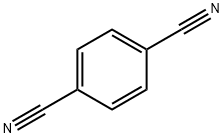
What is 1,4-Dicyanobenzene?
Chemical properties
biege powder
The Uses of 1,4-Dicyanobenzene
1,4-dicyanobenzene as a new internal standard in utilizing solid-state infrared intensity methods for the determination of thiocyanate bonding. Used as photosensitizer in [2+2] cycloadditions, nitrile building block.
What are the applications of Application
1,4-Dicyanobenzene is a nitrile building block
Synthesis Reference(s)
The Journal of Organic Chemistry, 51, p. 4714, 1986 DOI: 10.1021/jo00374a041
Tetrahedron Letters, 8, p. 759, 1967
Safety Profile
Moderately toxic by ingestion and intraperitoneal routes. An eye irritant. When heated to decomposition it emits toxic fumes of CNand NO,. See also NITRILES.
Purification Methods
Crystallise the dinitrile from EtOH or AcOH, and has m 221.5-222.5o after sublimation. [Beilstein 9 H 846, 9 I 376, 9 II 613, 9 III 4255, 9 IV 3328.]
Properties of 1,4-Dicyanobenzene
| Melting point: | 221-225 °C (lit.) |
| Boiling point: | 227.54°C (rough estimate) |
| Density | 1.3g/cm3(25℃) |
| vapor density | 4.42 |
| refractive index | 1.6231 (estimate) |
| storage temp. | Sealed in dry,Room Temperature |
| solubility | Chloroform (Slightly), DMSO (Slightly) |
| form | Powder |
| color | White to light yellow |
| Water Solubility | 0.08 g/L (23 ºC) |
| BRN | 1072210 |
| Exposure limits | NIOSH: IDLH 25 mg/m3 |
| Stability: | Stable. Incompatible with strong acids, strong bases, strong oxidizing agents, strong reducing agents. |
| CAS DataBase Reference | 623-26-7(CAS DataBase Reference) |
| NIST Chemistry Reference | 1,4-Benzenedicarbonitrile(623-26-7) |
| EPA Substance Registry System | 1,4-Benzenedicarbonitrile (623-26-7) |
Safety information for 1,4-Dicyanobenzene
| Signal word | Warning |
| Pictogram(s) |
 Exclamation Mark Irritant GHS07 |
| GHS Hazard Statements |
H315:Skin corrosion/irritation H319:Serious eye damage/eye irritation H335:Specific target organ toxicity, single exposure;Respiratory tract irritation |
| Precautionary Statement Codes |
P261:Avoid breathing dust/fume/gas/mist/vapours/spray. P264:Wash hands thoroughly after handling. P264:Wash skin thouroughly after handling. P271:Use only outdoors or in a well-ventilated area. P280:Wear protective gloves/protective clothing/eye protection/face protection. P302+P352:IF ON SKIN: wash with plenty of soap and water. P305+P351+P338:IF IN EYES: Rinse cautiously with water for several minutes. Remove contact lenses, if present and easy to do. Continuerinsing. |
Computed Descriptors for 1,4-Dicyanobenzene
1,4-Dicyanobenzene manufacturer
RPN ORGANICS PVT LTD
2Y
Phone:+91-9010289956
Whatsapp: +91- 9010289956
product: terephthalonitrile 96%
New Products
Mercury(II) nitrate monohydrate, 98% 2-Chloro-5-nitrobenzoic acid, 98% 2-Benzylpyridine 2-Amino-2-methyl-1-propanol, 93% 3-Benzyloxybenzyl Alcohol Aluminum potassium sulfate dodecahydrate 2-Chloro Acetophenone Methyl-2-Methoxy-5-Sulfamoyl Benzoate Orthochlorobenzaldehyde (2-Chlorobenzaldehyde) Pyrrolidine Para Chloro Toluene (PCT) Diiodo Pentoxide 1-(Sulfamoylamino)Propane 1-phenyl-1,2,3,4-tetrahydroisoquinoline 2-amino benzyl alcohol 3,5-benzyloxy Acetophenone Veratric acid Pyridine-2-carboxaldehydeRelated products of tetrahydrofuran
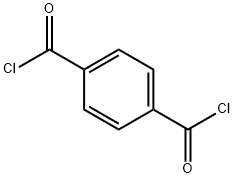


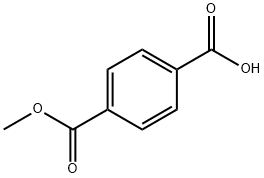


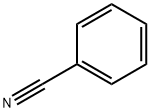
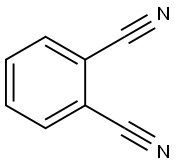
You may like
-
 terephthalonitrile 96%View Details
terephthalonitrile 96%View Details
623-26-7 -
 Terephthalonitrile CAS 623-26-7View Details
Terephthalonitrile CAS 623-26-7View Details
623-26-7 -
 1,4-Dicyanobenzene CAS 623-26-7View Details
1,4-Dicyanobenzene CAS 623-26-7View Details
623-26-7 -
 552-89-6 98%View Details
552-89-6 98%View Details
552-89-6 -
 4-Dimethylamine Pyridine 98%View Details
4-Dimethylamine Pyridine 98%View Details
1122-58-3 -
 2-Picolylamine (2-Aminomethylpyridine) 3731-51-9 98%View Details
2-Picolylamine (2-Aminomethylpyridine) 3731-51-9 98%View Details
3731-51-9 -
 2-Venylpyridine 202-879-8 98%View Details
2-Venylpyridine 202-879-8 98%View Details
202-879-8 -
 609-15-4 Ethyl-2-Chloroacetoacetate 98%View Details
609-15-4 Ethyl-2-Chloroacetoacetate 98%View Details
609-15-4
Statement: All products displayed on this website are only used for non medical purposes such as industrial applications or scientific research, and cannot be used for clinical diagnosis or treatment of humans or animals. They are not medicinal or edible.